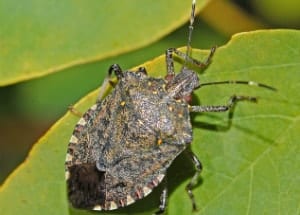Everyone has met with stink bugs at least once in their life, and everyone knows why they bear this name. They emit the aroma that is similar to the smell of socks, cilantro, and rotting fruits. And although besides the strong smell, they do not harm humans directly, they can cause severe damage to trees and flowers in your area.
So that you can protect your home and backyard from these pests, I wrote an article on how to get rid of stink bugs, which detailed the most effective methods of dealing with them both outdoors and indoors.
Stink Bug Infestation 101
Stink bugs are a serious threat to any crop. It is a known fact that they can reduce the economic value of fruits by almost 90% if they live in a garden or field. Farmers simply have to send their crops for processing, incurring losses.
To understand how to properly control these pests, you need to study a little deeper the features of this group of insects and realize what causes stink bugs on your site.

Quick stink bug identification
A distinctive feature of these pests is a strong and persistent smell. Special glands on their bodies produce an odorous liquid if an insect feels in danger. In fact, even larvae use this mechanism to protect themselves from birth.
If everything is clear with these insects’ smell, then their appearance is slightly different depending on a specific group. Most of them have a bright color, which allows them to disguise themselves as the environment easily.
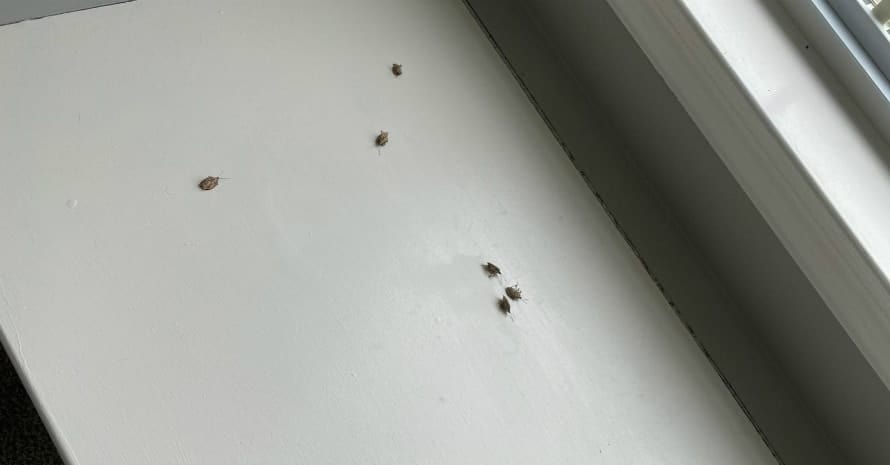
As a rule, adults have flattened bodies that resemble shields. They are not very large in length and can reach only 0.8 inches. Under a shell is a pair of wings that insects use to move from branch to branch. They do not fly very much due to their small wingspan. Stink bugs have two pairs of antennae, three pairs of legs, and a long proboscis.
Common stink bug species
At the moment, scientists know about 220 species of stink bugs, which belong to the family Pentatomidae, living in North America. There are about 4800 species in the world. Among the most common species are Green, Brown, and Southern Green stink bugs. They are very similar to each other in shape but differ only in some details of color.
Also recently, the so-called Brown marmorated stink bug has been especially active in the United States. It is known that this species was introduced to America from Asia in the late 90s. They quickly spread throughout its territory. At the moment, individuals of this species are found in almost all states. Agriculture on the east coast has suffered especially badly because of these bugs since there are the most favorable weather conditions for their reproduction.

What attracts stink bugs
These insects are considered to be “universal” pests. Most of them are herbivorous (with rare exceptions), but they are attracted by more than one particular plant. These insects can feed on all kinds of fruits, legumes, and vegetables. If you don’t find stink bugs in the house in time, they will begin to feed on decorative plants in flower beds and houseplants.
Besides, with the cold weather approaches, insects begin to seek refuge and hide under fallen leaves, in the bark of trees, in cracks in the walls of residential buildings and foundations. It is there that they fall into suspended animation to wait out the winter and wait for the spring warming.
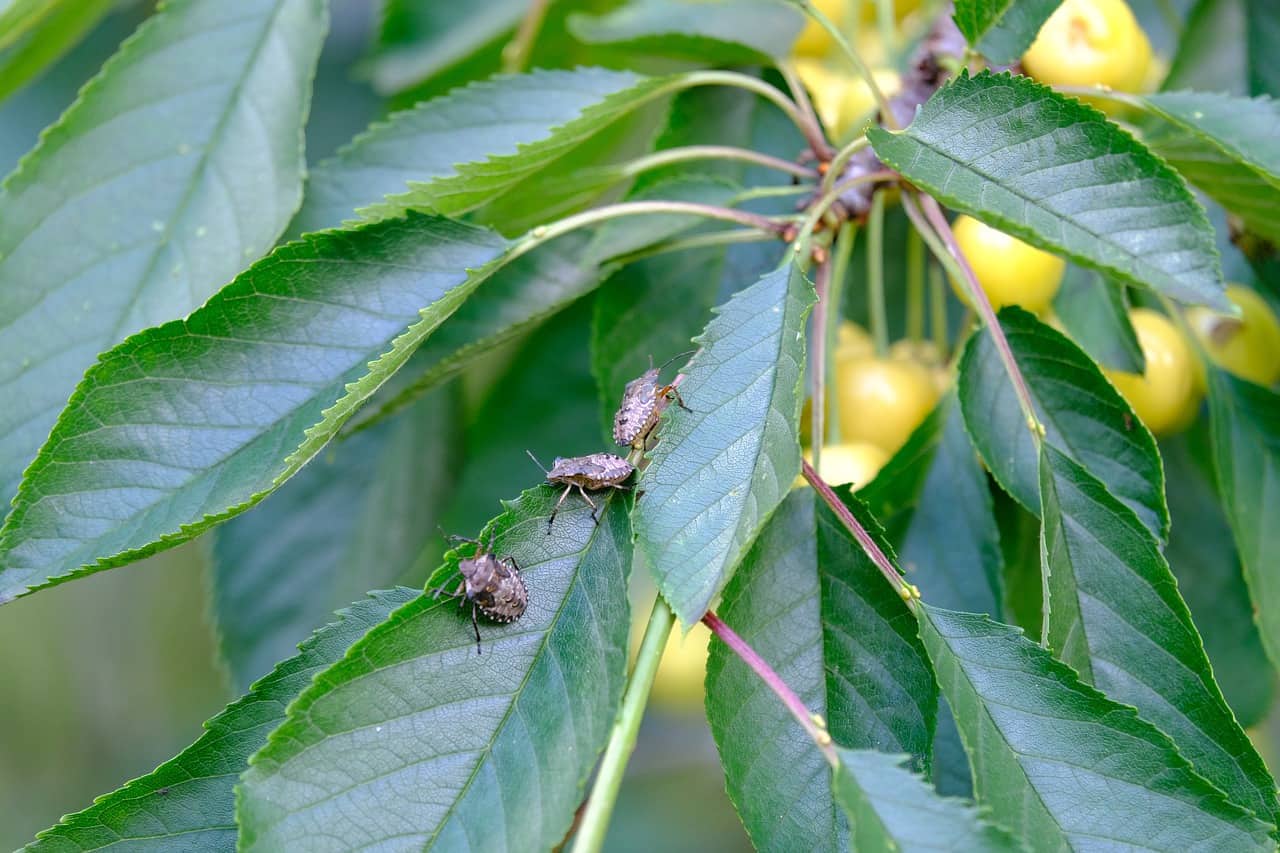
Stink bug dangers
Fortunately, these insects do not bite, do not carry diseases, and do not destroy buildings. In some cases, the liquid and odor they give off can cause an allergic reaction. That is why I recommend washing your hands with soapy water immediately.
Although they do not cause direct harm to humans, they seriously affect agriculture and represent a serious threat to farmers. The period of their activity falls on March-September. During this time, they can infect and destroy many edible crops. Stink bugs are not picky about food, so they eat almost any fruit and vegetable. To extract juice from them, they inject saliva under their skin.
This way of feeding reduces the effectiveness of conventional pesticides. Also, since these insects have wings, they are quite mobile. Homeowners should always be on the lookout: getting rid of one population does not guarantee that another will not come.
Stink bug infestation signs
It is worth noting that these pests are not trying to hide from humans anywhere. The main sign of the territory infestation is their presence in large numbers. Thanks to the shell’s characteristic shape and the smell, it will not be difficult to determine what they are.
Often they can be seen basking on house walls, which is exposed to the sun. It mainly occurs closer to autumn, when stink beetles crawl in search of a place for wintering.
Another telltale sign is damaged fruits and vegetables. You can see the characteristic scars and holes on the surface of a fruit: the places through which insects suck the juice. The bite site usually turns black from the injected enzyme. As a result, the pulp of vegetables and fruits acquires a mealy texture, and the insides rot.
The leaves are covered with spots, the development of young shoots stops, the inflorescence is not formed, which means that the fruits do not appear. All this leads to the complete death of a plant.
These creatures can also eat field crops such as corn and soybeans. They usually inhabit the edge of a field, creating an infestation swath up to 40 feet wide. It is characteristic that damaged plants remain green for a long time, while healthy ones die naturally. It is one of the indicators that stink bugs live in a field.
How to Get Rid of Stink Bugs: Easy Extermination Guide

As in the fight against any other pest, stink bug extermination requires an integrated approach. You should restrict food and water sources, seal all insect routes into your home, and use insecticides and other remedies to kill them both outside and inside. I’ll go into more detail about each step, as well as ways to get rid of stink bugs below.
[amazon table=”12739″ tracking_id=”how-to-get-rid-of-stink-bugs-20″]
Step 1: Seal all entry points
First of all, you should take care to prevent stink bugs from getting inside your house (if they haven’t already). Chances are, when you start treating your yard with insecticides, they will try to take refuge in the house. Also, remember that they are looking for a place to winter in the fall, and warm living space is an excellent option.
Having found a suitable hole, they attract other individuals with special smell. It is enough for one insect to appear so that there will be a bunch of them in a couple of days.

To protect your home, you should carefully examine the foundation, walls, windows, doors, and attic and identify any cracks and holes that pests can crawl through.
Most often, homeowners overlook chimneys, pipes, and vents. Seal all possible entry points, ensure that screens on windows and doors are intact and free of holes, and install protective screens for ventilation.
If insects nevertheless enter the house or settle in the voids of walls for the winter, most likely you will not see them, since they will go into suspended animation. So it will be almost impossible to get rid of them. However, in the spring, with the arrival of warmth, they will begin to crawl out of their shelters. That is why it is important to stop stink bugs from coming in.
Step 2: Eliminate food and water sources
Like any living thing, these insects need water and food for normal life and reproduction. The key to successfully combating them is to block access to these resources completely. First of all, check the pipes in your area and get rid of even the smallest leaks, if any.

Then make sure there are no accumulations of water in your garden or yard. To do this, clear the drainage system from blockages and take air conditioner tubes as far as possible from the house walls. It applies not only to the yard. If the interior also suffers from high moisture levels, it will have to be drained as well. You can improve your basement, attic, and garage insulation, or use air conditioners and dehumidifiers.
Of course, if there are fruits or vegetables in your garden, it will be quite difficult for you to block access to them completely. However, you can minimize it. Do not leave leftover food on a table in the open; store it in sealed containers.
Check that trash cans are tightly closed and clean them regularly. Remember to wipe down the table and any other surfaces after eating to remove debris and crumbs that might attract bugs.
Step 3: Treat stink bugs outside
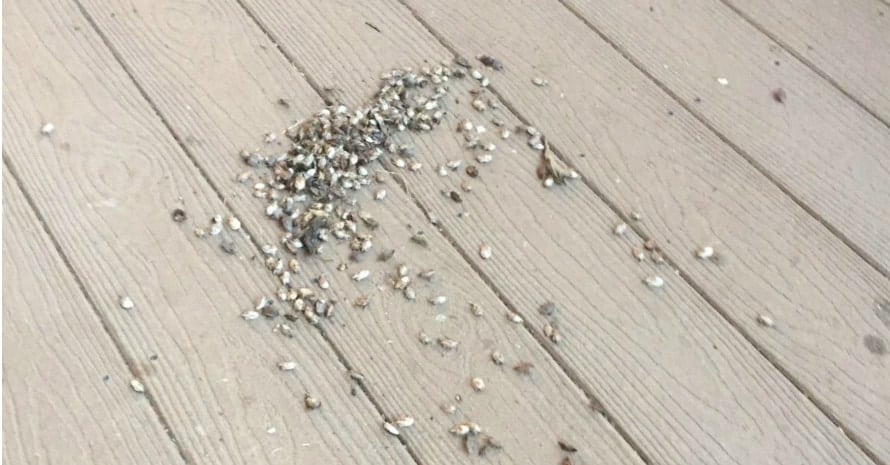
When all preventive measures have been taken, you can proceed to stink bugs removal. It is better to start doing it outdoors because most likely, it is where they live most. For whichever method you choose to work most effectively, clear your garden or yard of any potential hiding places, that is, collect grass clippings, fallen leaves, tree bark, logs, and firewood.
Insecticides
Using insecticides is the fastest and most effective way to stink bug control. However, when choosing the right product, it is important to remember that it can harm beneficial insects. They should be used with even greater caution if you have pets, children, and if you plan to eat processed fruits and vegetables.
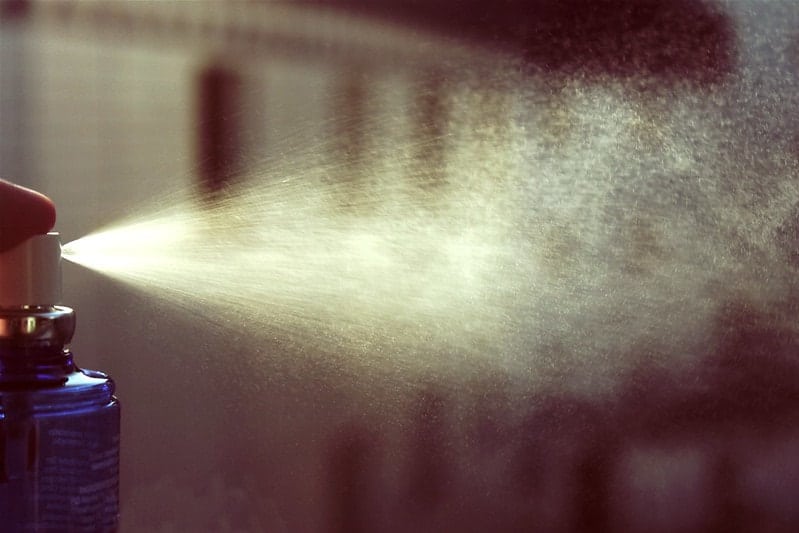
Since bodies of stink bugs are covered with rather dense shells, they are resistant to most common insecticides. That is what makes it difficult to fight them. At the moment, it has been scientifically proven that pyrethroid insecticides, which are most often used to kill insects, are the least effective.
I recommend looking for products that contain Oxamyl, Moribund, Rotenone, Deltamethrin, and Cypermethrin. Treat the entire yard with these liquids to eliminate creatures that live in grass. Some insecticides can be applied to house walls and roofs to eradicate any species that may have crawled into cracks.
Other outdoor remedies
If you regularly wonder how to repel stink bugs, then you can follow the recommendations of some gardeners who advise you to plant plants on the site that attract insects with their smell, such as amaranth, okra, and mustard. Pests scattered throughout your area will flock to the scent in one place and can be easily picked and destroyed.
Wet towels are also considered to be effective. Wet some towels and put them around your yard overnight (for example, on a railing or sun loungers). By morning, you will see a huge variety of stink bugs sitting on them. Just roll up the towels gently and kill the insects.
Diatomaceous earth (or kieselgur) has also proven to be powerful against many pests. Diatomite is crushed to a powder state, but microscopic sharp parts still remain in it, which causes mechanical harm to insects if they crawl around them. As a result of this damage, all the pests die. Unlike many chemical analogs, this product is absolutely safe for humans and pets.
Step 4: Treat inside
When the entire area around your house is processed correctly, you can move on to the interior. Remember that stink bugs move to warm rooms for the winter through cracks in the foundation, walls, and in the attic. Although they do not lay eggs and are not active during the cold season, their appearance in the spring can be an unpleasant surprise for you.
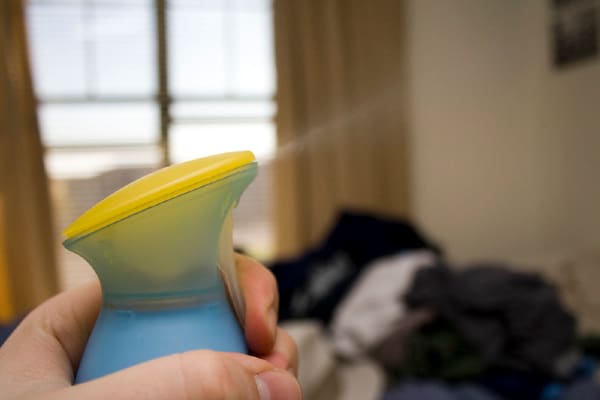
Sprays
Especially for dealing with stink bugs in residential premises, manufacturers produce special stink bug sprays that are safe for pets and people, odorless, and do not leave marks. They mainly kill insects by direct contact, so they should be applied to all places where pests can potentially crawl.
I recommend using insecticides carefully inside your home. These insects continue to emit a disgusting odor even after death, so it is important to remove dead creatures from the rooms in time.
If you don’t want to use store-bought insecticides, you can make a safe spray against them yourself. Mix equal proportions of dish soap and vinegar (for example, one glass each), add warm water (two glasses), pour the mixture into a spray bottle, and apply the resulting product directly to pests. It will weaken or even kill insects, which you can then easily collect.
Traps
Sticky pest traps are also an effective way to deal with stink bugs. Their only drawback is that a sticky surface can become dusty or clogged and stop working as it should. Otherwise, they are an excellent option for indoors, as they are quite easy to use, inexpensive, safe for pets and people, and perfectly catch not only stink bugs, but also any other crawling and flying pests.
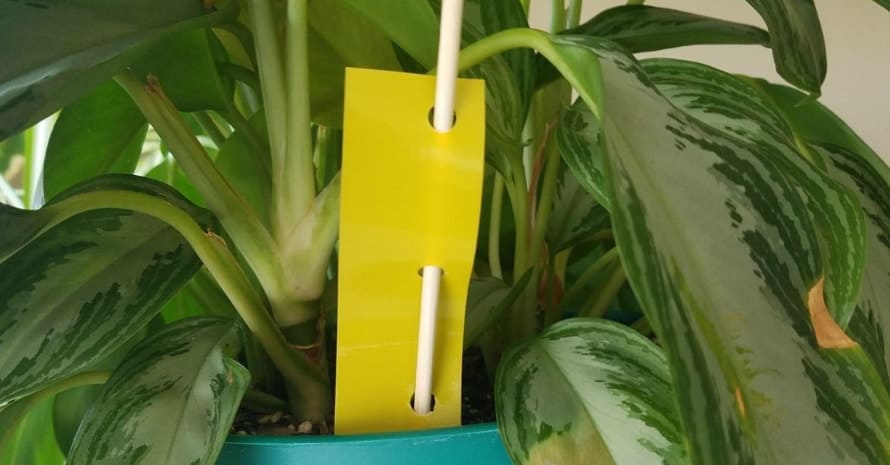
Some stink bug traps use light instead of scented glue as bait. Such a trap is easy to make yourself. Just take a plastic bottle, cut off its top, and place a LED lamp or candle on the bottom. Insert the cut piece back with the neck inward and secure it with duct tape.
Place these traps in dark places (like a garage or basement) and check them periodically to collect insects. Another affordable homemade stink bug trap option is to put the LED candle in a container filled with soapy water. Pests will flock to the light and simply drown.
Vacuuming
If your home (and your yard as well) has large concentrations of stink bugs, you can quickly collect them with a small vacuum cleaner. This way, you will be less in contact with them and breathe in less of a nasty smell. These insects do not crawl and fly very quickly, so it is not difficult to catch them. But do not forget to empty the vacuum cleaner immediately after use, as these pests may well get out.
Instead of collecting them in the main container, I recommend pulling a stocking over a tube of your vacuum cleaner. It will prevent bugs from getting stuck inside, and it will be easier for you to get rid of them. You can place insects in an airtight container or bottle to suffocate them. Or you can drown them in water with some dish soap and vinegar.
Top 3 Best Stink Bug Treatments
Based on my professional experience, I have picked three of the most effective tools to help you eliminate stink bugs effectively.
1. Best Stink Bug Trap: Kensizer 30-Pack Dual-Sided Yellow Sticky Traps
[amazon box=”B07DRN8H49″ template=”vertical” tracking_id=”how-to-get-rid-of-stink-bugs-20″ button_text=”Check price on Amazon”]
Specifications:
- Material: Paper
- Number of Pieces: 30
- Item Dimensions: 8 x 6 x 0.4 inches
- Item Weight: 15.8 ounces
- Target Species: Fly, Thrip, Mosquito, White Fly, Gnat
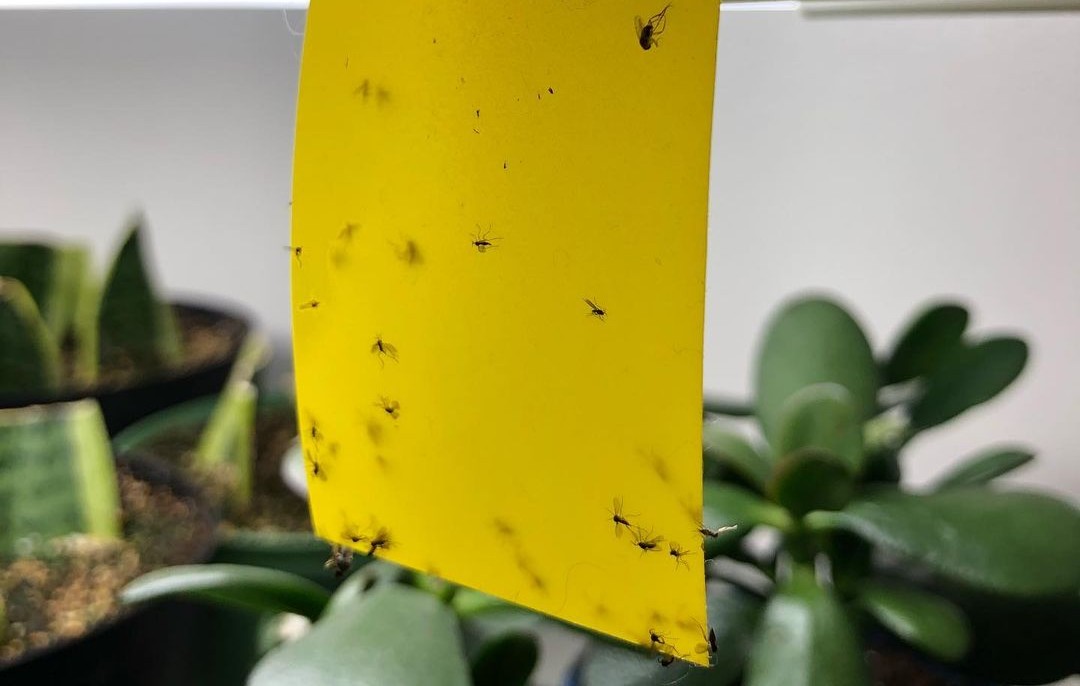
Bright yellow sticky sheets of this trap are designed to combat most small flying insects, including stink bugs. The used glue is non-toxic, safe for people and pets, so this product can be used both in your garden and yard and in any living space.
Each sheet is 8×6 inches; there are 30 pieces in a package. Each trap is coated with glue on both sides, is waterproof, and does not fade in the sun. It retains its effectiveness for two to three months. It is better to start using these traps as soon as you spot the first stink bug (roughly March-April).
This way, you can catch the adults and prevent them from breeding. If you missed this point, place the sheets in the places of their greatest accumulation, next to fruit trees, plantings of vegetables, and near the house walls on the sunny side of your site.
| Pros: | Cons: |
|
|
2. Best Stink Bug Indoor Killer Spray: Harris Stink Bug Killer
[amazon box=”B0055FOZEW” template=”vertical” tracking_id=”how-to-get-rid-of-stink-bugs-20″ button_text=”Check price on Amazon”]
Specifications:
- Active Ingredient: Deltamethrin
- Scent: Unscented
- Item Form: Liquid, Spray
- Item Dimensions: 7.1 x 4.3 x 11.7 inches
- Item Weight: 9 pounds
- Target Species: Stink Bug
As I wrote earlier, sprays and insecticides are the most effective way to control pests. Of all the indoor remedies for stink bugs, the Harris Stink Bug Killer was the most effective. The product comes in a 1-gallon bottle, which is sufficient for a wide range of applications. It depends on the area that you plan to process. Remember that it should be sprayed no more than once a week.
You should treat places where pests enter your house, as well as hard-to-reach points where they can hide (ventilation holes, space under a sink, behind a refrigerator). You can also apply it directly on a group of stink bugs. It can be used both at home and the yard. It is odorless and does not leave stubborn stains. The kit includes a spray nozzle.
| Pros: | Cons: |
|
|
3. Best Stink Bug Insecticide: BUGGSLAYER Insecticide Concentrate
[amazon box=”B008RGJYKQ” template=”vertical” tracking_id=”how-to-get-rid-of-stink-bugs-20″ button_text=”Check price on Amazon”]
Specifications:
- Item Form: Liquid, Spray
- Item Volume: 16 Fl. Oz.
- Item Dimensions: 1.8 x 3.8 x 7.4 inches
- Item Weight: 9 ounces
- Target Species: Box Elder Bugs, Stink Bugs, Multi-Colored Asian Lady Beetles & over 50 other insects
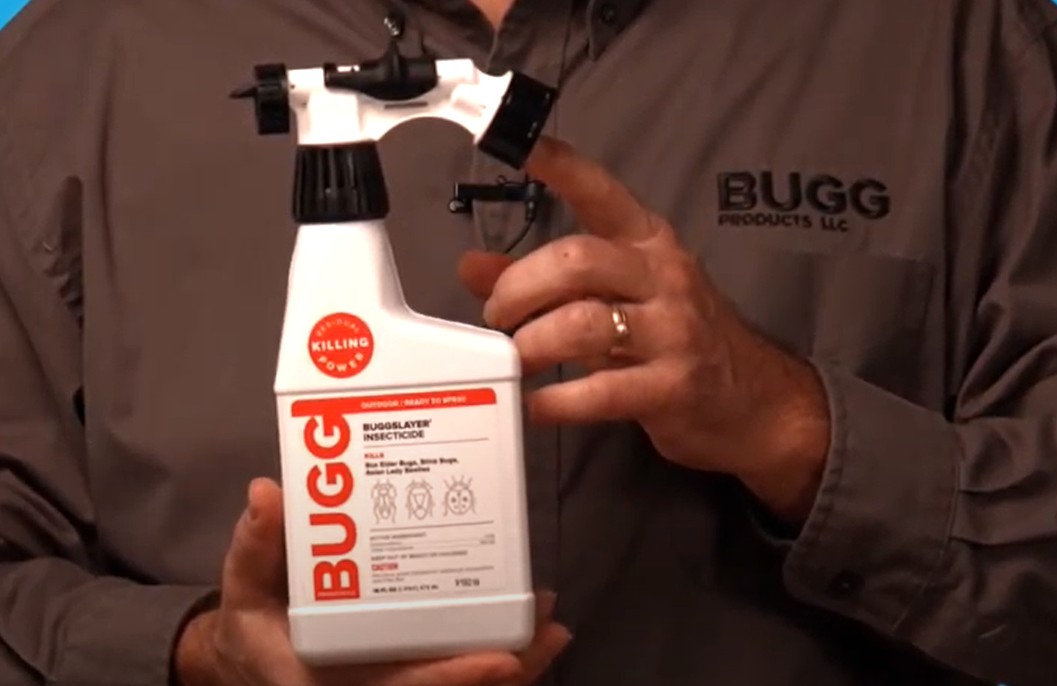
BUGGSLAYER Insecticide Concentrate is extremely powerful with a high Deltamethrin concentration, so it can only be used outdoors. It kills insects when they crawl over the treated surface. Thus, by spraying the product around your home, you create a protective barrier that lasts for weeks. Since it does not leave marks, you can use it on the exterior walls of your house, foundations, and patios to make sure insects don’t crawl into cracks.
The bottle volume is 16 ounces. Since it is a concentrate, it should be diluted in water at a ratio of 4 ounces of product to 1 gallon of water. The manufacturer recommends treating the area twice a year (in spring and autumn) to get rid of pest populations completely.
This product is very effective against not only stink bugs but also more than 50 species of other pests. Unfortunately, if used carelessly, it can lead to the disappearance of beneficial insects.
| Pros: | Cons: |
|
|
How to Prevent Stink Bugs
Now that you know all the most effective ways to kill insects, I’ll tell you how to keep stink bugs away. One of the simple but essential ingredients for successfully dealing with them is keeping your site clean and tidy. Remove mowed grass and fallen leaves from the lawn in time, close new cracks in walls and nets on windows, do not leave food and debris in free access.
In general, I recommend not killing insects, since they are part of the food chain, but making your site and house unattractive for them. So, for example, you can treat the surfaces in your yard with kaolin clay. This natural remedy will make trees and shrubs unsuitable for laying eggs as they simply cannot be fixed to trunks.
Attracting birds, beneficial insects, and other creatures to your area is another excellent way to deal with the stink bug problem. It is known that praying mantis, spiders, and toads are their natural enemies, so these insects will avoid the territories where they live.
Also, stink bugs, like many other pests, do not tolerate the aroma of many plants and essential oils from them. Combine peppermint, lavender, cedarwood, garlic, or onion oils with water and regularly spray all surfaces in your garden. You can also plant these plants around the perimeter of your yard to repel stink bugs.
In addition to smells, these insects react to light; to be more precise, it attracts them. Therefore, I recommend turning off the lights that you have outside at night. Otherwise, in the morning, you run the risk of discovering that the lantern above the entrance is completely covered with stink bugs.
Besides, Brown marmorated stink bugs were brought to America from Asia by accident because they got into boxes with some goods. So it never hurts to carefully check packages and products for signs of insects, especially if they come from overseas.

FAQ on DIY Stink Bug Extermination
In this part, I have collected the answers to the popular questions from homeowners who want to get rid of stink beetles on their own.
What do stink bugs eat?
The vast majority of stink bug species are herbivorous. They feed on plants, fruit, vegetable, and legume juices. For this, they have a long nose, with which they pierce a peel to get the nutritious liquid. Most often, this leads to fruit damage or even the death of a plant.
When do stink bugs come out?
The period of their activity is in spring, summer, and early autumn. Usually, they come out of hibernation in March, and already in September, they look for a refuge for wintering. However, sometimes during winter months, the ambient temperature rises above normal, then stink bugs wake up ahead of time.
Why are there so many stink bugs?
They were probably attracted to your territory by the abundance of vegetables, fruits, fresh herbs, and access to water. But the reason for their appearance in your house may be the approach of cold weather. These insects enter a state of diapause in winter and wait for it in a shelter, usually in residential buildings.
What are natural stink bugs repellents?
You can plant lavender, garlic, peppermint, and onions in your area as natural remedies for these pests, or use their essential oils mixed with water as a stink bug repellent spray. You can also put diatomaceous earth where they accumulate.
Does soapy water attract stink bugs?
No, soapy water doesn’t attract stink bugs. The only stink bug attraction in your house is light. However, the soapy water solution is often used for killing stink bugs. The recipe is simple: mix one part liquid dish soap to five parts water in a jar or any other uncovered container, stir it.
Put the jar by the wall the bugs sit on, take a chopstick, and quickly flick them off so that they fall straight into the water. Swiftness is crucial for this kind of operation: disoriented bugs are unable to release their terrible odor. The soap is needed for blocking stink bugs’ pores, in twenty minutes or so they stop breathing and drown.
After you eliminated stink bug invaders with a soapy jar bath, you can make a spray solution and sprinkle it in all the places the bugs may come from. This way every new bug in your house will slowly dehydrate and die.
Do stink bugs carry diseases?
Your usual home invader is a brown marmorated stink bug, it is absolutely of no harm to you. They don’t carry diseases and don’t even bite, but their odor and traces can provoke allergic reactions. If a skin irritation from contact with the bug occurs, contact your doctor.
Does a stink bug stink when you kill it?
Yes, it does. Stink bugs use their smell to signal their fellow bugs, they need smell to avoid predators and attract other stink bugs. If you kill a stink bug, you act like a predator to them — it will smell and signal other bugs to go away. Squashing bugs can be a method of getting rid of them for good.
It’s quite an effective way if you kill a couple of bugs in your yard to keep others from coming to the house, but it’s not a proper way if you have bugs inside your house — the smell will cause more damage to your home than any alive stink bug.
Don’t forget that stink bugs don’t have to die to send attractive smells to their comrades. If they like your house, they can recommend it to others by an intense smell. It’s very unattractive for people, so try not to make your home likable to these pests.
Keep Stink Bugs Under Your Control
When dealing with pests, it is important to take preventive measures to stop them. However, if they are already on your site, and you see stink bugs everywhere, do not despair. Use my step-by-step guide to tackle the problem: remove food and water from free access, close up all entry points and treat the house and yard with Harris Stink Bug Killer and BUGGSLAYER Insecticide Concentrate. Put Kensizer Yellow Sticky Traps in several places as an extra measure.
Share your pest control experience in the comments section. Have you encountered an invasion of stink bugs? How did you fight them?

